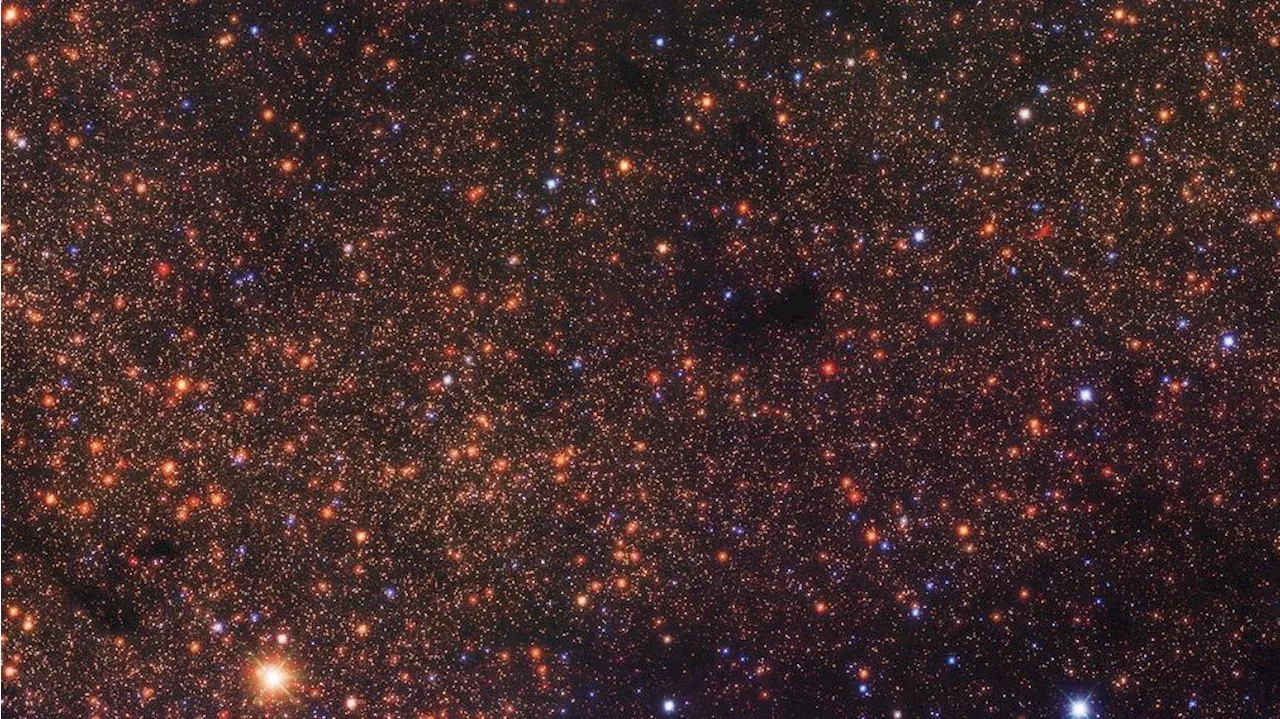Science, Space and Technology News 2024
The plane of our Milky Way galaxy, as seen by ESA’s Gaia space mission. It contains more than a billion stars, along with darker, dusty regions Gaia couldn’t see through. With its greater sensitivity and longer wavelength coverage, NASA’s Nancy Grace Roman Space Telescope’s galactic plane survey will peer through more of the dust and reveal far more stars. Credit: ESA/Gaia/DPACteam has announced plans for an unprecedented survey of the plane of our Milky Way galaxy.
A galactic plane survey was the top-ranked submission following a 2021 call for Roman survey ideas. Now, the scientific community will work together to design the observational program ahead of Roman’s launch by May 2027. “That would be pretty close to a complete census of all the stars in our galaxy, and it would only take around a month,” said Roberta Paladini, a senior research scientist at Caltech/IPAC in Pasadena, California, and the white paper’s lead author. “It would take decades to observe such a large patch of the sky with the Hubble or James Webb space telescopes.
“We can do very detailed studies of things like star formation and the structure of our own galaxy in a way that we can’t do for any other galaxy,” Paladini said.
United States Latest News, United States Headlines
Similar News:You can also read news stories similar to this one that we have collected from other news sources.
 Very Large Telescope snaps gorgeous shot of Milky Way's star-studded core (photo)Samantha Mathewson joined Space.com as an intern in the summer of 2016. She received a B.A. in Journalism and Environmental Science at the University of New Haven, in Connecticut. Previously, her work has been published in Nature World News.
Very Large Telescope snaps gorgeous shot of Milky Way's star-studded core (photo)Samantha Mathewson joined Space.com as an intern in the summer of 2016. She received a B.A. in Journalism and Environmental Science at the University of New Haven, in Connecticut. Previously, her work has been published in Nature World News.
Read more »
 A Huge Wave is Passing Through the Milky Way Unleashing New Stellar NurseriesDetailed maps of the stars in our galaxy have found a ripple of star forming regions near the Sun.
A Huge Wave is Passing Through the Milky Way Unleashing New Stellar NurseriesDetailed maps of the stars in our galaxy have found a ripple of star forming regions near the Sun.
Read more »
 First evidence of super cosmic ray accelerator found in Milky WayInteresting Engineering is a cutting edge, leading community designed for all lovers of engineering, technology and science.
First evidence of super cosmic ray accelerator found in Milky WayInteresting Engineering is a cutting edge, leading community designed for all lovers of engineering, technology and science.
Read more »
 Black hole at center of the Milky Way resembles a footballThe supermassive black hole in the center of the Milky Way is spinning so quickly it is warping the spacetime surrounding it into a shape that can look like a football, according to a new study. That football shape suggests the black hole is spinning at a substantial speed, which researchers estimated to be about 60% of its potential limit.
Black hole at center of the Milky Way resembles a footballThe supermassive black hole in the center of the Milky Way is spinning so quickly it is warping the spacetime surrounding it into a shape that can look like a football, according to a new study. That football shape suggests the black hole is spinning at a substantial speed, which researchers estimated to be about 60% of its potential limit.
Read more »
 A bar of stars at the center of the Milky Way looks surprisingly youngThe ages and locations of metal-rich stars in the galaxy suggest the Milky Way’s central bar finished forming just a few billion years ago.
A bar of stars at the center of the Milky Way looks surprisingly youngThe ages and locations of metal-rich stars in the galaxy suggest the Milky Way’s central bar finished forming just a few billion years ago.
Read more »
 This iPhone app can find the Milky Way's monster black hole from anywhereSamantha Mathewson joined Space.com as an intern in the summer of 2016. She received a B.A. in Journalism and Environmental Science at the University of New Haven, in Connecticut. Previously, her work has been published in Nature World News.
This iPhone app can find the Milky Way's monster black hole from anywhereSamantha Mathewson joined Space.com as an intern in the summer of 2016. She received a B.A. in Journalism and Environmental Science at the University of New Haven, in Connecticut. Previously, her work has been published in Nature World News.
Read more »
